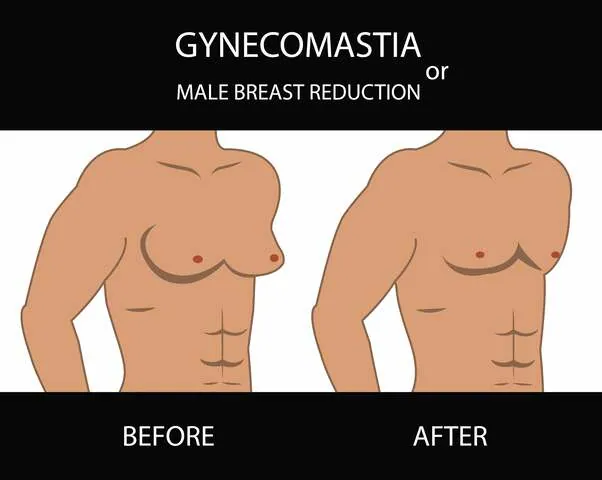
A Deep Dive into Gynecomastia Surgery Recovery and Outcomes
Gynecomastia surgery, or male breast reduction surgery, is a transformative procedure that offers relief to men dealing with the physical and emotional effects of enlarged breast tissue.
Gynecomastia surgery, or male breast reduction surgery, is a transformative procedure that offers relief to men dealing with the physical and emotional effects of enlarged breast tissue. While the decision to undergo surgery is a significant step, understanding the recovery process and managing expectations regarding the results are equally crucial. In this comprehensive guide, we will explore what kind of recovery and results individuals can expect after gynecomastia surgery.
The Recovery Period:
1. Immediate Post-Operative Phase:
Following gynecomastia surgery, patients will be monitored in a recovery area before being released. It is normal to experience some discomfort, swelling, and bruising during the initial hours. Pain medication prescribed by the surgeon can help manage post-operative pain.
2. First Few Days:
The first few days after surgery are critical for initial healing. Patients are advised to rest and avoid strenuous activities. Wearing a compression garment is often recommended to minimize swelling, provide support, and aid in the natural contouring of the chest.
3. Managing Swelling and Bruising:
Swelling and bruising are natural responses to surgery and typically peak within the first few days. Applying cold compresses and keeping the head elevated during sleep can help reduce swelling. Surgeons may also recommend arnica or other homeopathic remedies to aid in minimizing bruising.
4. Activity Restrictions:
Patients should expect limitations on physical activities during the initial recovery period. Strenuous exercises, heavy lifting, and activities that strain the chest muscles should be avoided for several weeks. Following the surgeon's guidelines regarding activity restrictions is crucial for optimal healing.
5. Return to Work and Normal Activities:
The timeline for returning to work and normal activities varies depending on the individual and the nature of their job. Many individuals can expect to resume light activities within a week, but more strenuous tasks may require additional time off.
Long-Term Recovery:
1. Gradual Resumption of Exercise:
While light activities can be resumed relatively quickly, a gradual return to regular exercise is essential. Patients should consult with their surgeon to determine when it is safe to resume activities like weightlifting and high-impact exercises.
2. Follow-Up Appointments:
Regular follow-up appointments with the surgeon are scheduled to monitor the progress of the healing process. Surgeons will assess the chest's contour, address any concerns, and provide further guidance on post-operative care.
3. Scar Management:
Gynecomastia surgery involves incisions, and scarring is an inevitable part of the process. However, surgeons take care to minimize visible scarring. Patients are advised on scar management techniques, such as applying silicone-based gels or sheets, to promote optimal healing.
4. Final Results:
The full results of gynecomastia surgery may take several months to become apparent. While initial improvements are visible soon after surgery, residual swelling can persist for several weeks. It is essential for individuals to be patient and follow the post-operative care instructions for the best possible outcome.
Managing Expectations:
1. Realistic Timeline:
Understanding that the final results of gynecomastia surgery take time is crucial. Patience is key during the recovery process, and individuals should not be discouraged by temporary swelling or minor asymmetry, which often resolve as the healing progresses.
2. Body Image and Emotional Well-Being:
Gynecomastia surgery not only addresses the physical aspects but also has a significant impact on emotional well-being. It's normal for individuals to experience a range of emotions during the recovery process. Open communication with the surgeon and, if needed, seeking support from friends, family, or counseling can be beneficial.
3. Understanding Limitations:
While gynecomastia surgery can significantly improve the chest's appearance, it may not create a perfectly sculpted chest. Managing expectations regarding the extent of improvement and discussing any concerns with the surgeon is crucial for overall satisfaction.
4. Maintaining Results:
To maintain the results of gynecomastia surgery, individuals are encouraged to maintain a healthy lifestyle. This includes regular exercise, a balanced diet, and avoiding factors that may contribute to gynecomastia, such as certain medications.
Considerations During the Recovery Period:
1. Pain Management
Discussing pain management strategies with the surgeon is important. While prescribed pain medications help alleviate discomfort, patients should communicate any concerns about pain levels during follow-up appointments.
2. Hyderation and Nutrition
Staying hydrated and maintaining a balanced diet can contribute to the body's healing process. Nutrient-rich foods aid in recovery, and proper hydration helps flush out toxins from the body.
3. Avoiding Tobacco and Alcohol
Smoking and excessive alcohol consumption can hinder the healing process. Individuals undergoing gynecomastia surgery are often advised to refrain from smoking and limit alcohol intake during the recovery period.
4.Sleep Position
Sleeping with the upper body elevated can help minimize swelling and promote optimal blood circulation. Using extra pillows or an adjustable bed may be recommended during the initial weeks of recovery.
5. Clothing Choices
Loose-fitting, comfortable clothing is advisable during the recovery phase to avoid unnecessary pressure on the chest. This can enhance comfort and reduce irritation around the incision sites.
Addressing Common Concerns:
1. Asymmetry and Swelling
It's common for one side of the chest to heal slightly differently than the other, leading to temporary asymmetry. Surgeons can provide reassurance on the expected resolution of these concerns and whether any interventions may be necessary.
2. Nipple Sensation
Changes in nipple sensation may occur temporarily after surgery. While sensation typically returns to normal, patients should discuss any concerns with the surgeon during follow-up appointments.
3. Physical Activity Guidance
Clear guidelines on when to resume regular physical activities, including workouts and sports, should be discussed with the surgeon. Gradual reintroduction of exercises ensures the chest heals properly without compromising the results.
Postoperative Mental Health Considerations:
1. Support Networks
Maintaining open communication with friends and family provides emotional support during the recovery process. Having someone to share concerns with can positively impact mental well-being.
2. Body Image Counseling
Some individuals may experience shifts in body image perception during the recovery phase. Consider incorporating information about seeking professional counseling or support groups to address these emotional aspects.
3.Celebrating Milestone
Acknowledging and celebrating small milestones during the recovery journey can positively impact mental well-being. Whether it's reduced swelling or improved chest contour, recognizing progress is essential.
Long-Term Maintenance Tips:
1.Regular Check-ups
Encourage individuals to continue regular check-ups with their surgeon even after the initial recovery period. This ensures any concerns can be addressed promptly, and the long-term results are monitored.
2.Adapting to Lifestyle Changes
Maintaining a healthy lifestyle contributes to the longevity of gynecomastia surgery results. Incorporating regular exercise, a balanced diet, and stress management techniques can positively impact overall well-being.
3.Body Positivity and Self-care
Emphasize the importance of self-care and developing a positive body image. This includes self-affirmation, self-compassion, and embracing the journey towards a more confident and content self.
Conclusion
Gynecomastia surgery is a transformative journey that goes beyond physical changes, influencing emotional well-being and self-confidence. Understanding the recovery process and setting realistic expectations are key components of a successful outcome. By following post-operative care instructions, attending regular follow-up appointments, and being patient during the healing process, individuals can achieve the desired results and enjoy the benefits of a more masculine chest contour. The road to recovery may have its challenges, but with proper guidance and a positive mindset, the results of gynecomastia surgery can be both satisfying and life-changing.


Comments
Login & Write comment